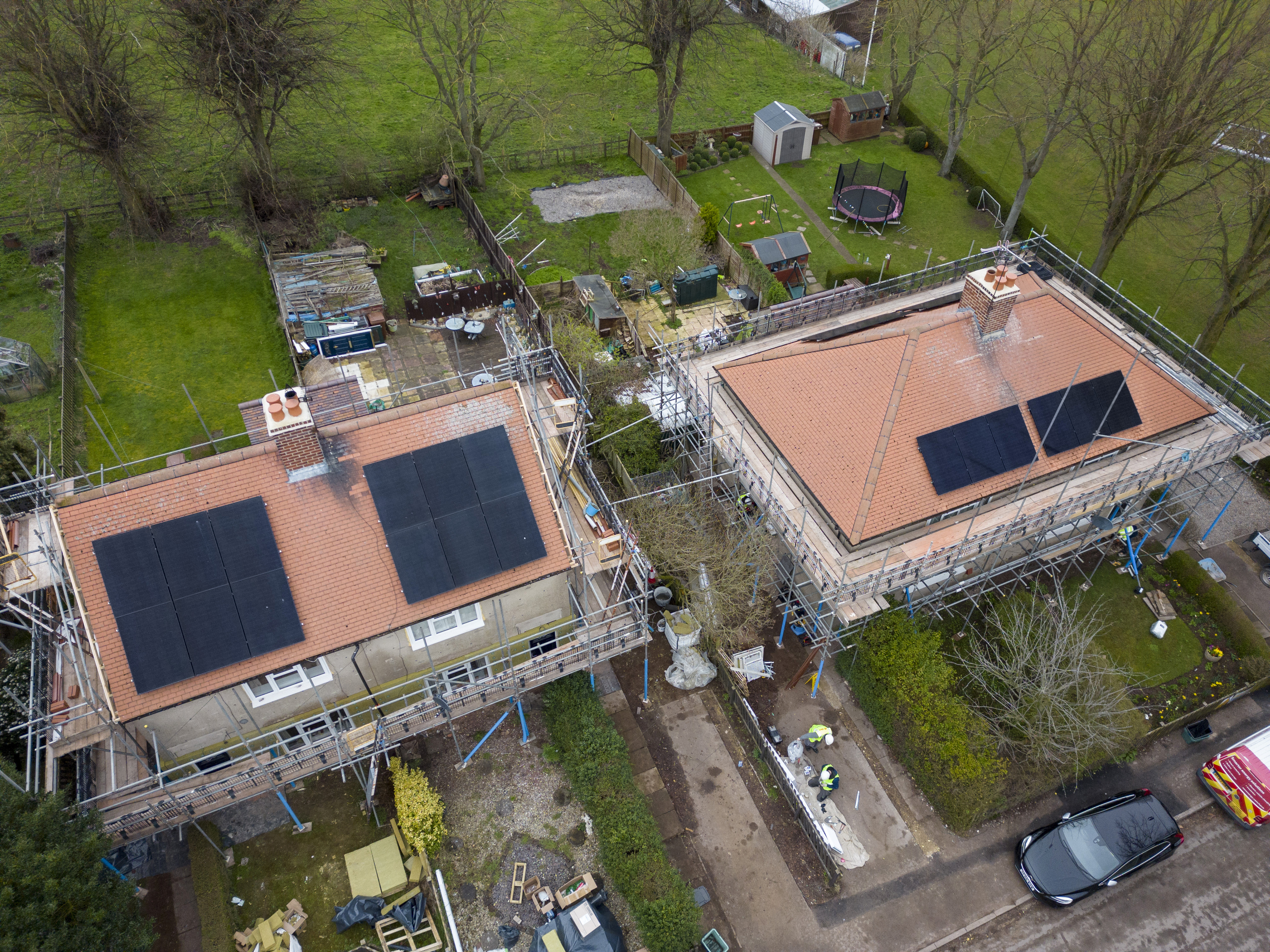
Nick Atkin is chief executive of Yorkshire Housing
Two years on from the tenants’ climate jury, it is time for real change
Nick Atkin sets out what has changed since the Northern Housing Consortium’s tenant jury published its report into how housing associations should tackle climate change – and what still needs to be done
Almost two years ago, a group of 30 social housing tenants published a set of recommendations that set out how housing associations should tackle climate change and deal with residents in the process.
So, what’s changed? And what are the key challenges and opportunities of retrofit that have emerged over the past two years?
Before I get started, it’s important to set the scene. Although some ‘green’ policies seem to have been watered down, decarbonisation is still well and truly here to stay. Don’t worry, I’m not going to get into the whole ULEZ debate, although the conversations and attention ULEZ has received in recent weeks supports my question: why is most of the focus on reducing car usage and emissions when the 26 million homes in England produce more carbon emissions than all the cars on our roads?
To simplify things, I’ve exercised a bit of creative licence and broken things down into the seven Ss of retrofit.
Social housing: One in six of all homes are social rented, so it makes sense to start here so we can decarbonise at scale. There are also higher rates of fuel poverty in the social rented sector, so energy efficiency measures are likely to have a greater impact and help bring people out of fuel poverty.
Scale: We know that social housing providers are planning to invest huge amounts in retrofit over the next 20 to 30 years, but is it enough? Savills estimates that on average, it’ll cost £22,000 to retrofit each home. If you apply that figure across the four million social rented homes, we’re going to need to invest £88bn. We also know that the £22,000 estimate is likely to be much lower than what’s needed, so £88bn is best-case scenario.
Supply chain: The current supply chain for retrofit products remains underdeveloped, with most of the key components produced overseas resulting in supply uncertainties and price fluctuation. As social housing providers we can use our significant investment and guaranteed future demand to provide businesses with the confidence to scale up production and develop manufacturing facilities closer to home. This will also help to boost the local economy in and around the communities we serve. There’s already substantial potential investment linked to environmental, social and governance from businesses such as Octopus, Aviva and Lloyds.
“Savills estimates that on average, it’ll cost £22,000 to retrofit each home. If you apply that figure across the four million social rented homes, we’re going to need to invest £88bn”
Skills: Having a strong supply chain is one thing but we need to develop the skills so we can install green technologies and maintain this equipment. As well as the opportunity this provides local communities, we need to train thousands of gas engineers so they’re able to make the transition to maintaining low-carbon heating systems. We know from experience that we need to provide our customers with the skills and knowledge as they adapt to a new way of living in low-carbon homes.
Shared supply: For existing homes, one of the key challenges is that there are nine million homes in the UK that need their electrical supply decoupling before we can install low-carbon technology such as heat pumps and electric vehicle chargers. This is because the supply going into the property is shared with a neighbour, in effect reducing the load capacity by 50%.
The lack of a clear plan for these works and there being minimal co-ordination or alignment with housing decarbonisation retrofit works is causing significant delays and additional costs.
While there is a more organised response from the distribution network operators, who acknowledge the role they need to play to enable large-scale decarbonisation programmes to progress at pace, the reality remains challenging and is putting a brake on the delivery of these retrofit works.
The entire process is riddled with risk and uncertainty and is likely to dent the confidence of the sector to commit to the levels of investment needed to reach our decarbonisation ambitions.
Sell: The Social Housing Tenants’ Climate Jury Report, published two years ago, represented a pivotal moment in our decarbonisation journey. The message was clear. Unlike some of the other work we do in customers’ homes, retrofit works are a tough sell. In part because these works cause significant disruption but also because they don’t always result in lower bills.
“Unlike some of the other work we do in customers’ homes, retrofit works are a tough sell. In part because these works cause significant disruption but also because they don’t always result in lower bills”
Yorkshire Housing recently held an event for customers who’ll be involved in our Social Housing Decarbonisation Fund Wave 2 project later this year. They understood why we needed to upgrade their homes but had several valid questions. For decades they’ve been used to fossil fuel systems, they know how they work and how much they cost to run. Switching to a low-carbon alternative creates anxiety and worry. It’s vital we take the time to engage with customers so we understand their concerns and support them to make the transition.
Strategic planning: For decarbonisation to be delivered at scale, a long-term vision is needed for each place or region. Invariably this needs to be agreed at civic leadership level. There are lots of great examples here in Yorkshire, with the creation of the Climate Innovation District in Leeds as well as the West Yorkshire Energy Accelerator. Only with a strategic approach can we proceed at a regional and national level with the certainty and confidence everyone needs. The current short-term, stop-start funding approach only delivers piecemeal results.
The message is clear. The social housing sector has a vital role to play to decarbonise our economy and deliver the significant level of investment that in turn offers great opportunities for local, regional and national economies.
Nick Atkin, chief executive, Yorkshire Housing
Sign up for our asset management newsletter
Already have an account? Click here to manage your newsletters












